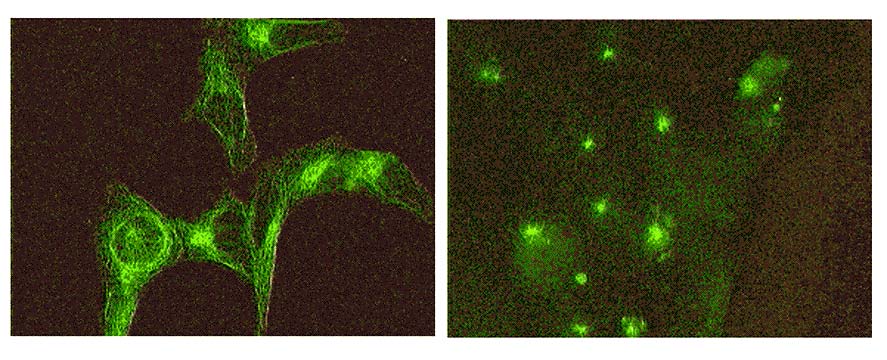
SPRING 2002 SYLLABUS
BISC 305, CELL PHYSIOLOGY
SPRING, 2002 COURSE DESCRIPTION AND GUIDELINES
GENERAL GOALS: This course will concentrate on dynamic processes within cells, between cells and between cells and their environment. The major areas that will be covered are: cell membranes, cell junctions and adhesion to the extracellular matrix, cytoskeleton and cell motility, signal transduction processes, protein trafficking, vesicular transport in cells and cell cycle. For each topic we will try to incorporate the most recent information from the primary research literature. An understanding of the dynamic nature of these processes will be a major goal. There will also be an emphasis on experimental approaches and findings. Finally, students will be asked to demonstrate critical analysis of research findings.
INSTRUCTOR: Gary Laverty, Associate Professor, 205/247 Wolf Hall, 831-8180
(laverty@udel.edu)GTA: Kimberly Robinson, biokim@udel.edu
OFFICE HOURS: M,W, 9:30-11:00; F, 14:00-16:00 (or whenever I am in the office)
LECTURES: T,R 11:00-12:15, 205 Kirkbride
COURSE WEBSITE: http://www.udel.edu/Biology/laverty/cells.html
TEXT: Karp, "Cell and Molecular Biology. Concepts and Experiments" 3rd Ed, Wiley.
GRADES: Final grades will be based on a 300 point scale, as follows:
Exam I (in class) 100 points
Exam II (finals week) 100 points
In-class quizzes (3 @ 20) 60 points*
Research Assignment 40 points#
___________________________________
TOTAL 300 points* In-class quizzes: 10-15 minute quizzes will be given on the following dates:
Feb 21; March 12 and April 23# Research Assignment: details to be announced
CLASS SCHEDULE
DATES TOPICS CHAPTER/PAGES
Feb 5 Introduction 1 (1-30)
(also review Chapters 2 and 3 as needed)Feb 7, 12 Biomembranes, composition, structure, fluidity 4 (122-150)
Feb 14, 19 Membrane transporters and channels 4 (150-165)
(173-177 EP)Feb 21*, 26, Cytoskeleton I: IFs and MTs 9 (333-366)
28 14 (590-607)March 5, 7 Cytoskeleton II: actin and cell motility 9 (366-392)
March 12*, Cell signaling 15 (628-665)
14, 19, 21, 26March 28 MID-TERM EXAM (in class)
April 2, 4 Spring Break!
April 9, 11 Cell surface, extracellular matrix, adhesion 7 (243-272)
16, 18 integrins, cell junctions 15 (654-658)April 23*, Cell compartments, protein trafficking 8 (279-329)
25, 30, endoplamsic reticulum, Golgi, lysosomes
May 2, 7 endocytosisMay 9, 14 Cell cycle 14 (580-590)
REVIEW FOR MIDTERM EXAM
(Biomembranes, Transport and Cytoskeleton)